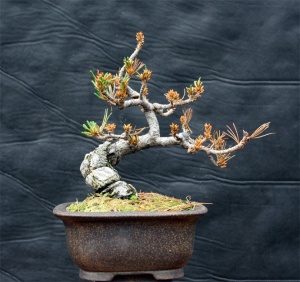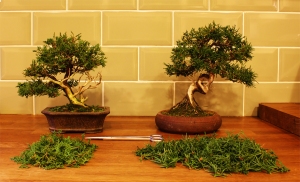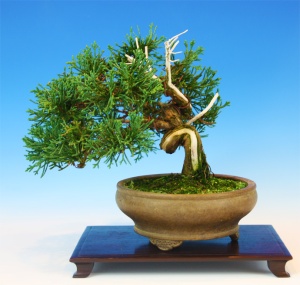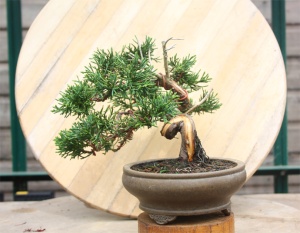I have been specialising in shohin sized trees for about 3 years now. In that time, I have put together a collection of about 50 shohin sized trees. Despite having that number to choose from, finding 5 that work together and are sufficiently well developed and presented to be considered show worthy, is proving to be quite a challenge.
This is the best that I can come up with at the moment

When I think about trees that work together in a display, I am thinking about the relative proportions of each tree in the group. I want trees that are all approximately the same size. If you have 1 or 2 trees that are a little larger than the others in the group, the eye is immediately drawn to that.
Take a look at this next picture, which was taken in February of this year.

The cork barked elm at the top of the display is considerably larger than those below it. It just looks out of proportion when viewed with the others. The black pine in the first picture creates a far better balance
I think the relative positions of the zelkova and gardenia in the centre of the display works better in the second picture, however, the striking blue and white Echisen Hosui pot suits its position at the top and centre.
While the basics of shohin display are relatively easy to comprehend, the subtleties can be infinitely varied and complex. There is no substitute for trying it out at home or in the club and listening to the advice of knowledgeable friends.
As a starting point I would strongly recommend the display pages of Morten Albek’s website to those who are not already aware of it























